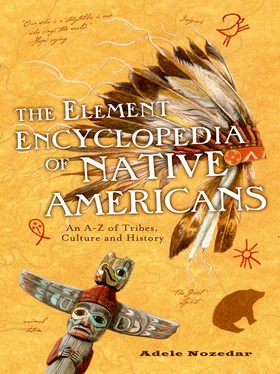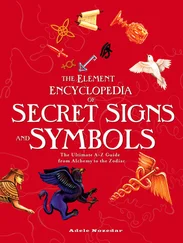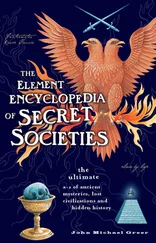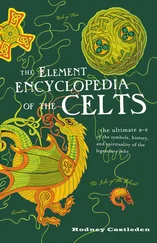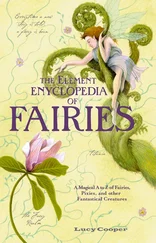A tribe from the Northwest, the Apache were renowned for their fearlessness which, combined with a natural ferocity, meant that they were much feared, not only among the white settlers, but by other Natives, against whom were long-running feuds. Since they had been living in New Mexico when the Spaniards had first arrived there with horses, the Apache were one of the first tribes to train, breed, and ride horses after they had captured the animals in raids. It was their horseback raids on the Pueblosettlements of that area that gave them their name: Apachu means “enemy” in the Zunilanguage, and “fighting men” in the Yuma tongue. Inde , meaning “people,” is the term that the Apachean groups used to refer to themselves. Although the Apache and the Navajoare related, the term “Apache” isn’t used in reference to the Navajo. Both Apache and Navajo are a part of the Athabascan language group.
There were several different bands of tribes that are grouped under the general heading of Apache. These include the Chiricahua, who had the reputation of being the most ferocious of all the Apache groups, the KiowaApache (or Plains Apache), the Jicarilla(who cultivated cornas well as hunting buffalo), and the Mescalero(so-named because of their fondness for the roasted heads of the wild mescalplant). The LipanApache in Texas were known to be particularly “unruly.” These separate Apache groups didn’t really work in any kind of unity; there were seven different languages between the major groups, as well as diverse cultural differences between those groups.
The Apache were seasonal hunters, ranging after buffalo, deer, and elk. The Apache were matrilinear—that is, the children were deemed to belong to the tribe of their mother and, once married, their father’s obligations lay with their mother’s clan. Although all the separate Apache clans operated distinctly from one another, during times of warfare they banded together to make a formidable fighting force.
As soon as they gained access to firearms as well as horses, the Apache became even more dangerous than before. It’s fair to say that they posed the greatest threat to the Europeans in the desert territories of New Mexico and Arizona. In addition to their warlike ferocity, the Apache were intelligent, wily strategists. One U.S. general, whose identity has been lost, described the Apache as “the tigers of the human species,” although for the Apache themselves their nature was simply one born of the constant struggle to survive, and the guerrilla war tactics that they adopted came completely naturally to them. It was rumored that an Apache warrior could run for 50 miles without stopping.
The relationship between the Apache and the Pueblo people was peaceable enough. The Apache pitched their wickiupshelters on the outskirts of the Pueblo villages as they moved through in pursuit of wild game. However, the coming of the Spanish put an end to this existence. The Spanish slave traders had no compunction in hunting down captives to work in the silver mines of northern Mexico, and the Apache found in the Spanish a rich source of horses, guns, and captives of their own.
When, in 1870, the tribe were told that they had to stay on the reservationthat had been allotted them, a particular band, under the leadership of Cochise, simply refused, and caused as much mayhem for the U.S. Government troops as they possibly could. In 1873 the troops had corraled some 3,000 Apaches and forced them onto the reservation. Unsurprisingly in view of such treatment, the Apache chose to continue fighting.
Perhaps the most famous of all Apache leaders was Geronimo, who led the tribe from 1880. However, even Geronimo had to admit defeat at the hands of the U.S. Government in 1886.
During the spring of 1882, Doklini, a popular medicine manof the Apachetribe who was otherwise known as “Attacking the Enemy,” otherwise Nabakelti, told his considerable number of followers who lived on the White Mountain Reservationin Arizona that he had had a vision, a divine revelation: the information imparted to Doklini revealed how the dead could be brought back to life.
At this time, the losses to Native Americans of all tribes are impossible to estimate; suffice to say that everyone must have been affected by the deaths of family, friends, and colleagues because of diseases, war, and starvation. Such a message of hope must have been inspiring, and the same emotions would hit those affected by the Ghost Dance Movement, which would gain momentum just a few short years later.
Doklini prepared some equipment that he needed for the miracle. He constructed 60 large wooden wheels painted with magical symbols, and also carved 12 sacred sticks. One of them, which he shaped into a cross, was given the title “Chief of Sticks.” Then he gathered 60 men from among his most fervent followers, and then Doklini started the dance.
When the time was right, Doklini went to the grave of a man, prominent among his people, who had died just a little while earlier. The medicine man and his followers danced around the grave and then disinterred the bones. They then danced a circle dance four times around these bones; this dance went on all that morning, and then the group chose another grave and repeated the ritual in the afternoon. A shelter of brush was placed over the bones in each instance.
The next set of instructions was then given by the medicine man. Everyone must pray for the next four mornings, he said; at the end of this time, the people to whom the bones belonged would be restored once more to life and vitality.
By the second morning of prayer, the small band of Apache, anticipating the restoration of two of their loved ones, were almost at the point of hysteria, convinced that Doklini’s medicine would have the desired effect.
Meanwhile, news of this interesting development had reached some of the Apache scoutswho were based at Fort Apache, and were excused from their duties so that they could go and see what was happening. To the outside visitor, it must have appeared as though those waiting for their dead to be resurrected had gone crazy; this was the information that was relayed back to the fort. The presence of Doklini was requested, who responded by sealing the brush shelters over the bones tightly and suggesting, angrily, that he would appear to answer questions after two more days had passed. He also called together his people, explaining that the interruption meant that the bones might not reconstitute in the way he had promised, but that, because of the interference and interruption of the white men, the whole procedure might need to be repeated.
Doklini traveled to Fort Apache with something like an entourage: 62 dancers and all the equipment: the wheels, the sticks, and ceremonial drums. In all, it took the party nearly two days to reach their destination, stopping to dance along the way, and they made an encampment just above Fort Apache, dancing, drumming, and waiting for someone to come and see them. But no one came. After dancing and waiting all night, at dawn the party wended their way back home, arriving not long after dawn after a day and a half of traveling. Word came that the agent at Fort Apache was expecting them. Doklini replied that they had traveled to Fort Apache, no one came to see them, and that he wasn’t going to go all that way again.
The powers at Fort Apache decided to send a troop of 60 men to the small Apache settlement where Doklini and his band were based, with the purpose of arresting the old medicine man. Sixty men might seem extreme, given the task, but the agent was concerned that the Indians might resist the arrest of their spiritual leader.
Читать дальше
